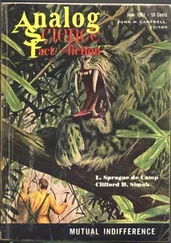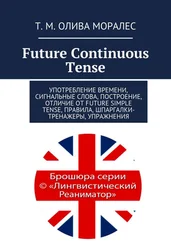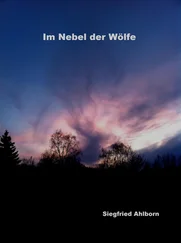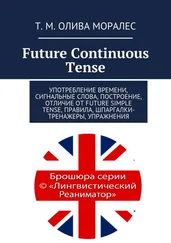The results suggest, that moisture and thermal changes are the most severe damaging factors for tuffs from Oaxaca. The southern and eastern sides of most buildings are the ones with the highest temperature changes, and therefore are weathered the strongest. The northern side usually experiences a lot of moisture, while the western side is in general the least weathered building side. The tuff varieties from Mitla are very suitable building stones and have remained in the buildings for a long time. The green tuff from Oaxaca (CVO) is a historical building stone of good quality but needs to be protected from moisture. The replacement stone from Etla (CVE), which is used today, is a suitable building rock but is certainly of a lower quality than CVO. Therefore, conservational treatment should be considered for CVE.
This work was supported by the German Research Foundation (Si-438/52-1) and the German Federal Environmental Foundation (AZ20017/481). We would like to thank J. L. Noria Sánchez, A. E. Andrade Cuautle and M. Á. González for the support of the on site work. For the laboratory support and helpful comments we thank K. Wemmer, J.Menningen, W. Wedekind and C. Gross.
Bernal, I. (1963), Otra tumba cruciforme de Mitla, Estudios de cultura náhuatl, Vol. 4, pp. 223–232.
Blanton, R., Feinman, G., Kowalewski, S. and Nicholas, L. (1999), Ancient Oaxaca, Vol. 2, Cambridge University Press.
Casanova, J. P., and Pino, L., (2004) Templos históricos de Oaxaca, 1. ed.: Oaxaca de Juárez, H. Ayuntamiento de Oaxaca de Juárez, H. Ayuntamiento Oaxaca de Juárez (Series), Volume 2.
García, N. M. R. (2016), Mitla: Su desarrollo cultural e importancia regional, Fondo de Cultura Económica.
Hirschwald, J. (1912), Die Prüfung der natürlichen Bausteine auf ihre Wetterbeständigkeit, W. Ernst & Sohn, Berlin.
Kück, A., Pötzl, C., López-Doncel, R. A., Dohrmann, R. and Siegesmund, S. (2020b), Effects of zeolites and swellable clay minerals on water related properties and thermal dilatation in volcanic tuff rocks, in Siegesmund, S. and Middendorf, B. (Eds.), Monument future: Decay and conservation of stone, Göttingen, Kassel, Mitteldeutscher Verlag, Halle.
Siegesmund, S. and Dürrast, H. (2011), Physical and mechanical properties of rocks, in Siegesmund, S. and Snethlage, R. (Eds.), Stone in architecture, Springer, pp. 97–225.
Urquiaga, J. (2000), La restauración del ex Convento de Santo Domingo, Oaxaca, Consejo Nacional para la Cultura y la Artes, México.
SUSTAINABLE LIME RESTORATION MORTARS: PHYSICAL PROPERTIES AND DURABILITY ASSESSMENT
José Diaz, Beatriz Menéndez
IN: SIEGESMUND, S. & MIDDENDORF, B. (EDS.): MONUMENT FUTURE: DECAY AND CONSERVATION OF STONE.
– PROCEEDINGS OF THE 14TH INTERNATIONAL CONGRESS ON THE DETERIORATION AND CONSERVATION OF STONE –
VOLUME I AND VOLUME II. MITTELDEUTSCHER VERLAG 2020.
Geosciences and Environment Cergy, Cergy-Pontoise University, France, jose.diaz-basteris@u-cergy.fr, beatriz . menendez@u-cergy.fr
In order to improve the ecological footprint of the restauration mortars while keeping their efficiency, we have tested several combinations of natural hydraulic lime and air lime with natural aggregates and additives. Repair mortars should be compatible with the support (stones, bricks) and protect original materials from environmental agents; aesthetical and historic aspects must not be neglected. We started by “simple” mixtures of lime and natural siliceous sand or crushed calcareous limestone. Aggregates granulometry was 0/2 mm in all the cases. More “complex” mortars were also prepared by incorporating the additives pinecone resin, semimilled cones of pine, milled glass waste, chamotte (brick production residue).
Different physical properties have been measured in all mortars: porosity, density, capillarity absorption, mechanical strength (flexural and compression), P and S waves velocities from which dynamic Young’s modulus and Poisson’s ratio were inferred. Durability of mortars has been estimated by salt crystallization and frost/thaw cycles.
Keywords: Restoration mortars, sustainable Cultural Heritage conservation, Building materials, Durability
Restoration mortar designates a group of products made to repair a damaged masonry. They are used to rebuild the lost parts of buildings, monuments or sculptures that have disappeared and to make replicas of architectonic or sculptural elements of high cultural value, placed inside buildings or museums to ensure their conservation. Mortars for restorations must be carefully selected before application. They have to be able to interact with the ancient stone and match in a chemical, physical and mechanical way with the pre-existing materials (Rota Rossi Doria, 1986; Torney, 2016). The choice of the mortar must take into account the support properties and the environment in which the mortar will be applied. Nowadays, in the development of new commercial restoration mortars, their environmental impact and their durability in future conditions are not always considered.
Our work aims at proposing solutions to produce more ecological and durable mortars. This research will allow the development of a series of new restoration mortars which design will be done in a “circular economy” philosophy.
To develop new sustainable formulas, we tested different additives available in Paris region, with a low CO2 footprint and capable to improve the 60mechanical properties of resulting mortars. Inorganic additives such as crushed bricks, crushed glass and slags have been identified in historical mortars. The use of recycled materials is considered as a zero CO2 emission contribution to the mortar footprint; only the energy used to transform these materials: grinding or cleaning is considered in the total environmental balance. For this reason we included recycled additives in our formulations. Crashed bricks (Aalil et al 2019) and waste glass powder (GWP) have been used in construction works because they improves the durability and the compressive strength of lime mortars (Carsana et al. 2014). GWP provides a pozzolanic behaviour to lime mortar (Edwards et al. 2007).
Many studies have been done about the influence of kind of binder, composition and particle size of aggregates on the physical and chemical properties of mortars. For example, the use of limestone sand as aggregate is recommended to ensure a better compatibility with natural stones (Szemerey-Kiss et al. 2011).
In ancient cultures like Mayans and Romans, organic additives were used to improve the properties of the mortars (Villaseñor et al. 2009; Ordóñez et al. 2019). For example, the tannin and sugar content of the pinecones ensured water resistance and plasticity of mortars (Rampazzi et al 2016, Arcolao 1998). In restoration, it is very important to dispose of mortars with different ranges of physical and mechanical properties using natural additives and without using any cement. (Russlan et al. 2018).
The amount of raw materials is limited and must be preserved and managed with caution. One important aspect of the presented work is to save natural raw materials when formulating restauration mortars. In order to increase the sustainability of the restoration mortar industry, the use of waste materials will be enhanced.
Different mixtures were prepared in order to determine the influence of components in the physical properties of harder mortars. Two binders, four types of sand (aggregates) and four additives were employed in the fabrication of studied mortars. The binders are: aerial lime (Cl90) and hydraulic lime (NHL5) both provided by Socli company. The aggregates are: silica sand (Leroy Merlin), calcareous sand provided by Rocamat company, silico-calcareous sand (Italcementi group) and fine silica sand (Sibelco). Four different additives were used: chamotte provided by Briqueterie d’Allone, ground glass provided by the Fédération du Verre, ground pine cone and water/oil solution of pine cone.
Читать дальше












